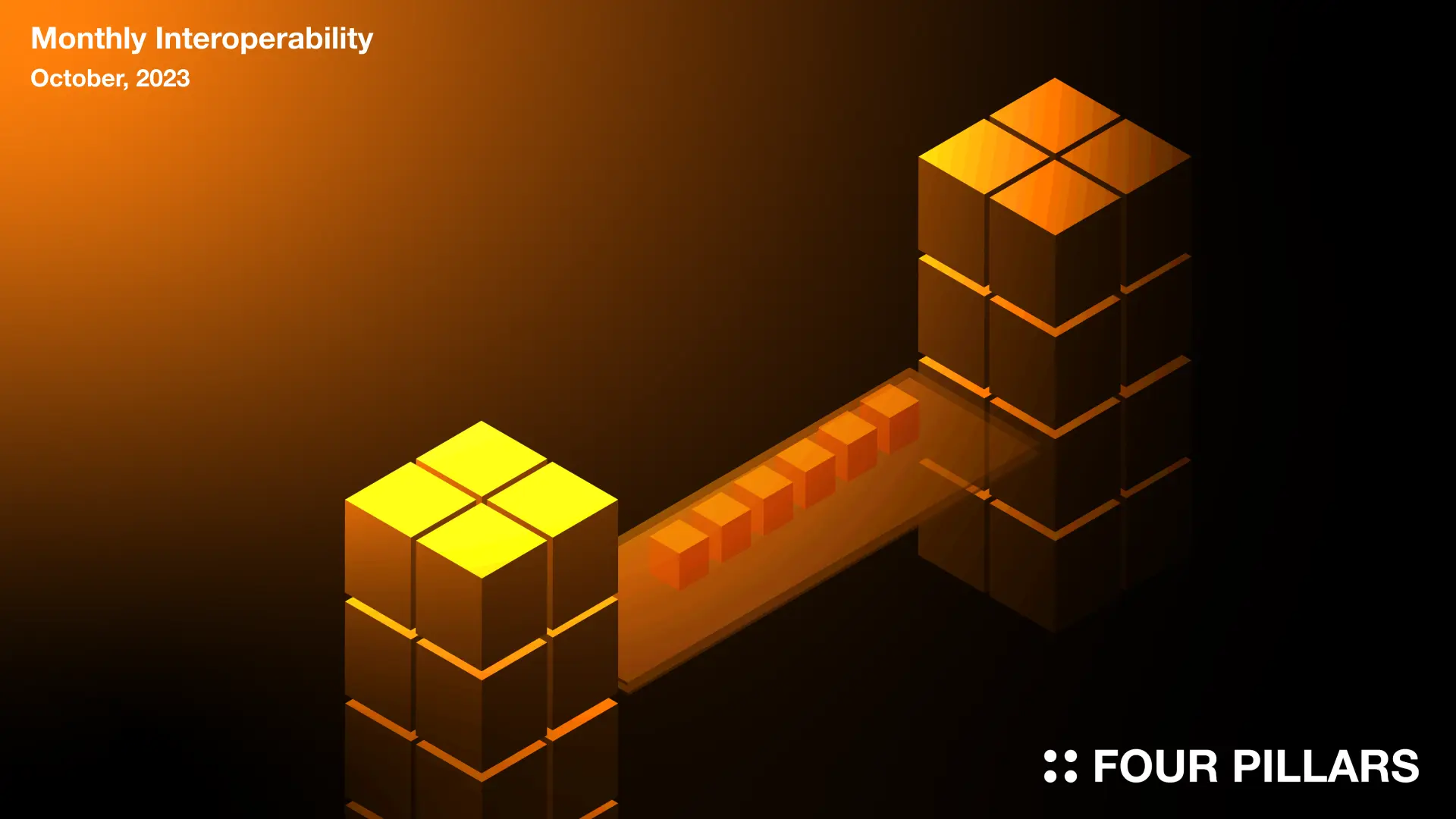
The number of blockchains and rollups is increasing at a fast pace, and this trend seems to continue as Celestia launched its DA layer. This DA layer allows potential modular blockchain projects to be deployed and operated. This is beneficial for the ecosystem because it enables diverse designs for the operation of blockchain applications.
However, this can potentially lead to a fragmentation of liquidity and standards. This issue became apparent when layerzero announced that wstETH was deployed as OFT-20 standards without the approval of Lido's governance. While this fragmentation is possible due to the permissionless nature of blockchain, it highlights the lack of shared standards, which may not be beneficial for the overall community and its future.
I believe that more shared standards and liquidity will be developed in the upcoming months.

OFT-20 stands for the omnichain ERC-20 token standard operated by Layerzero. It allows tokens to be burned and minted for use across multiple chains. Layerzero announced and started supporting the operation of wstETH as OFT without the approval of Lido DAO (OFT-20, wstETH is currently live on Stargate). As a result, when transferring wstETH to Avalanche, BNB, or Scroll, it is burned and minted on that chain. However, Layerzero made this announcement without receiving approval from Lido DAO, which has been criticized by the community. This move may lead to liquidity fragmentation. For example, if wstETH is transferred from Ethereum to Scroll and then back to Ethereum, it may result in a different token from the original wstETH, as it is burned and minted in the process.

Source: Connext on X: "Today, we're announcing a unified call for Open Bridge Standards
The article presents a unified call for open bridge standards to promote interoperability and connectivity between blockchains and rollups in web3. It expresses concerns about proprietary standards like LayerZero that could hinder flexibility and encourage vendor lock-in. Proprietary standards also create systemic risks if tokens are locked under those standards.
The key points emphasized are the importance of open, public standards over proprietary ones to allow healthy competition and reduce risks. Token issuers should control their own tokens, and there needs to be consensus on the canonical version of tokens on each chain.
The vision is for collaborating on improving open standards like EIP-7281 to advance cooperation in the blockchain space. Various projects signal their commitment by signing onto the call for open bridge standards. This aims to establish a more interconnected ecosystem with reduced risks of vendor lock-ins.
There were no interoperability projects that received investments this month.
Zetachain aims to enable true omnichain functionality by combining interoperability and Layer 1 capabilities into a single blockchain network. It utilizes the Cosmos SDK and Tendermint consensus to provide fast finality times for transactions. Through omnichain smart contracts, Zetachain allows applications to interact with assets from other chains like Ethereum and Bitcoin in a trustless manner. This infrastructure could unlock the full potential of DeFi by connecting liquidity pools and enabling cross-chain DEX trading, lending, and payments. While Zetachain simplifies development and improves user experience, its cross-chain transaction throughput may be limited compared to single-chain solutions due to constraints from connected blockchains and consensus processes involved in coordinating updates across networks.
Bridges can be token bridges or data bridges. Token bridges transfer tokens between chains using mechanisms like liquidity networks, burn/mint stablecoin bridges, and omnichain token standards. Important data bridge types include arbitrary messaging bridges that enable cross-chain communication and emerging technologies like storage proofs and proof aggregation. Liquidity networks that power token transfers have different design patterns such as pool-based bridges, orderflow auction bridges, and potential optimizations through shared sequencers. As the need for interoperability increases, bridges will play a bigger role in facilitating cross-chain movement of value and information across rollup and blockchain ecosystems.
Moonwell has pioneered a novel governance framework called Temporal Governance that allows governance of a protocol deployed across multiple blockchains like Moonbeam and Base L2 in a decentralized and secure manner by utilizing Wormhole for secure cross-chain messaging to "teleport" governance proposals voted on in Moonbeam to Base L2 for automated execution through tools like OpenZeppelin Defender's Sentinels, Autotasks, and Relayers without manual intervention, tracking proposal timestamps in key-value stores to ensure execution only after timelocks and notifying the community of governance activities through a Discord bot for transparency, representing an important open source contribution providing a scalable multi-network governance framework beyond just Moonwell that undergone security audits to enable robust decentralized governance across disparate blockchains using standards of trust minimization.
Blockchain networks need a decentralized peer-to-peer overlay network for tasks like data dissemination, storage, and retrieval. However, existing unstructured P2P overlays used by most blockchains don't consider the differences between nodes, leading to performance, security, and scalability issues. Anoma proposes a new P2P overlay architecture that divides the network into "sovereign domains" to allow customized protocols for different node types within each domain, while still enabling communication between domains. This approach handles differences by using intra-domain and inter-domain protocols, and uses node-based and group-based reputation systems for cooperation. It aims to provide the benefits of existing overlays like robustness and decentralization while solving their non-functional issues for blockchain networks.
Thanks to Kate for designing the graphics for this article.
Dive into 'Narratives' that will be important in the next year